#bilonamethod
Text
What are the different processes of making cow ghee?
What is the Traditional Bilona Process?
Cow ghee is a common and healthy kind of clarified butter that is commonly used in Indian cuisine and Ayurvedic treatments. Through a variety of processes, the pure golden goodness of cow's milk is separated to create cow ghee. Let's look into the many processes utilised to make ghee.
Let's investigate the many methods used to make ghee:
Traditional Bilona Method: By using a traditional wooden churner and rotating cultured curd formed from cow's milk both clockwise and anticlockwise, this process produces ghee. The curds were stirred until the butter and buttermilk separated. The leftover substance in the butter is then cooked on firewood over a low flame to produce rich, fragrant ghee.
Direct Cream Method: This method involves skimming the cream from cow's milk and collecting it in a container. The collected cream is then heated slowly to allow the water content to evaporate. As the cream cooks, it gradually transforms into ghee, leaving behind the milk solids, which are strained out.
Desi Method: The desi process involves allowing the cream separated from cow's milk to naturally ferment, which improves the flavour. Following fermentation, the cream is churned to produce butter, which is then cooked to create ghee. Rural homes frequently employ this method, which is renowned for its distinctive flavour.
Stovetop Method: This method involves melting unsalted butter in a pan on low heat. As the butter melts, it separates into three layers - foam on top, clarified butter in the middle, and milk solids at the bottom. The foam is skimmed off, and the clarified butter is strained to remove any impurities, resulting in ghee.
Microwave Method: In this modern method, unsalted butter is placed in a microwave-safe container and heated in short intervals until it melts completely. The melted butter is then allowed to rest for a few minutes to let the milk solids settle at the bottom. Finally, the clear golden liquid on top is carefully poured out as ghee.
Each of these processes has its unique characteristics, but the end result is the same - pure and flavorful ghee. Whether you prefer the traditional method or opt for a quicker approach, making ghee at home allows you to enjoy its rich taste and reap its various health benefits. Remember to strain the ghee properly to remove any impurities and store it in an airtight container to maintain its freshness.
What is the Traditional Bilona Process?
Ghee is made using the traditional and age-old technique known as Bilona Method. Ghee is created in this procedure by churning cultured curd formed from cow's milk in both the clockwise and anticlockwise directions using a medical wooden churner. The buttermilk and butter are separated from the curd by churning. The leftover liquid in the butter is then cooked on firewood over a low flame to produce rich, fragrant ghee. The procedure is known as Bilona. The Bilona is manually handled, allowing for a slow, gentle churning that helps preserve the ghee's natural flavours and qualities.
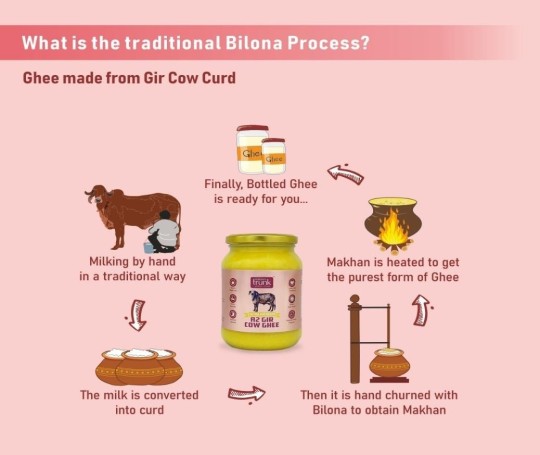
The Bilona method, also known as the traditional or Vedic method, is a meticulous and Time-honoured process of making ghee. Here are the steps involved in the Bilona method:
Step 1: Boiling raw A2 milk
To ensure the quality of our ghee, we start with the highest quality raw A2 milk. The health of the cow and the quality of grass they consume play a significant role in the milk's quality. We carefully boil the milk, which not only eliminates any bacteria but also makes it safe for consumption. It takes approximately 25-30 liters of cow milk to produce 1 liter of ghee. According to Ayurveda, ghee should only be made from the milk of grass-fed cows.
Step 2: Setting up curd
After boiling the milk, we use a spoonful of existing curd as a starter culture to make curd or yogurt. Alternatively, a few drops of lemon juice or tamarind can also be used. We mix the starter culture with the milk and let it rest in a warm place overnight. Once the curd is set, we keep it in a cool place before proceeding to the next step.
Step 3: Churning of curd
The curd or yogurt is churned using a wooden churner called a Bilona. It is important to churn the curd in both clockwise and anti-clockwise motions. This process can take some time. As we churn, the curd separates into butter and buttermilk. The butter, also known as loni or makkhan, is the result of the third step.
Step 4: Separating fat
Once the churning process is complete, we separate the loni/makkhan from the buttermilk. This loni/makkhan will be used to make ghee. It's worth noting that the buttermilk is not wasted; it can be enjoyed as a delicious cool drink or used in various culinary preparations.
Step 5: Heating the Makkhan (fat)
The loni/makkhan is transferred to a stainless steel pot and heated over medium-high heat on natural firewood. As the butter melts and comes to a boil, we reduce the heat to a gentle simmer. This process allows the water content to evaporate. Once the butter turns clear and a layer of solids forms at the bottom of the pot, the ghee is nearly ready. You'll start to notice the distinct aroma of ghee as it reaches its optimal flavour. The duration of boiling determines the final flavour and aroma of the ghee.
The final step involves straining the golden liquid ghee through a strainer and storing it in dry glass jars for future use. It is crucial to keep the ghee away from any moisture, as water can spoil its quality. Ghee does not require refrigeration and can be stored at room temperature.
By following this Traditional Bilona process, we ensure that our A2 Gir cow ghee retains its natural flavours, essential nutrients, and aromatic goodness, providing you with a truly exceptional product.
#no preservatives#naturestrunk#a2 ghee#desi cow ghee#bilonamethod#Ghee#diet#food diary#natural products
0 notes
Text
Just like home-made traditionally, Natureland Organics Ghee is made through the bilona process by churning the curd. Taste like home and is filled with a natural unique flavor and aroma.
Rejuvenate yourself with nature's natural energy booster-made meals.
Visit www.naturelandorganics.com for more.
.
.
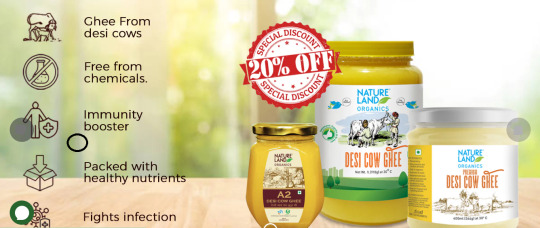
#ghee#organicghee#bilonaghee#bilonamethod#a2gheeindia#organicfood#organicfarming#cleanfood#farmtofork#NaturelandOrganics#EatNatural#LiveHealthy
0 notes
Text
A2 Ghee Dessert from Amyra A2 Ghee Made From Bilona Method
Amyra A2 Ghee is made from pure cow milk with the nutrient-preserving Bilona Churning Process, which makes it richer and more nutritious than other ghee. It can also be used in desserts!

https://amyrafoods.in/products/amyra-a2-cow-ghee
#amyrafoods#amyrafoodsorganic#amyrafoodsa2ghee#amyrafoodsa2gheedessert#amyrafoodsbilonaa2gheedessert#bilonaa2ghee#bilonagircowa2ghee#amyrafoodsbilona#bilonamethod#besta2ghee#amyrafoodsbesta2ghee#organica2ghee#fresha2ghee#a2gheeindia#a2gheebenefits#a2gheesweets
0 notes
Video
youtube
The Richness of Desi and Pure Bilona Cow Ghee #shorts #youtubeshorts
1 note
·
View note
Text
Just like home-made traditionally, Natureland Organics Ghee is made through the bilona process by churning the curd. Taste like home and is filled with a natural unique flavor and aroma.
Rejuvenate yourself with nature's natural energy booster-made meals.
.
.
Visit www.naturelandorganics.com for more.
.
.
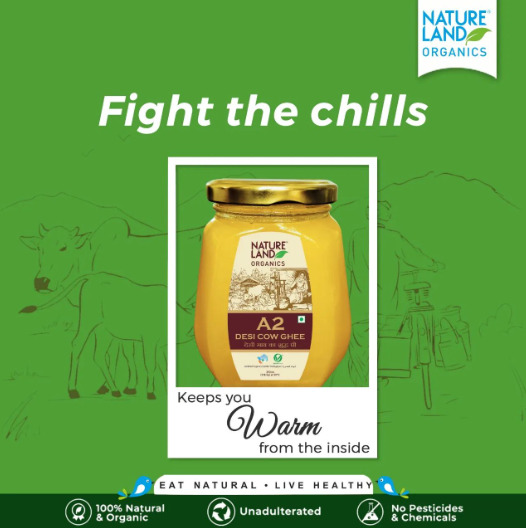
#ghee#organicghee#bilonaghee#bilonamethod#a2gheeindia#organicfood#organicfarming#cleanfood#farmtofork#NaturelandOrganics#EatNatural#LiveHealthy
0 notes
Text
Amyra A2 Ghee Made From Bilona Method
Looking for ghee that's superior in quality and nutrition? Look no further than Amyra A2 Ghee, made with pure cow's milk and the nutrient-preserving 'Bilona Churning Process'.
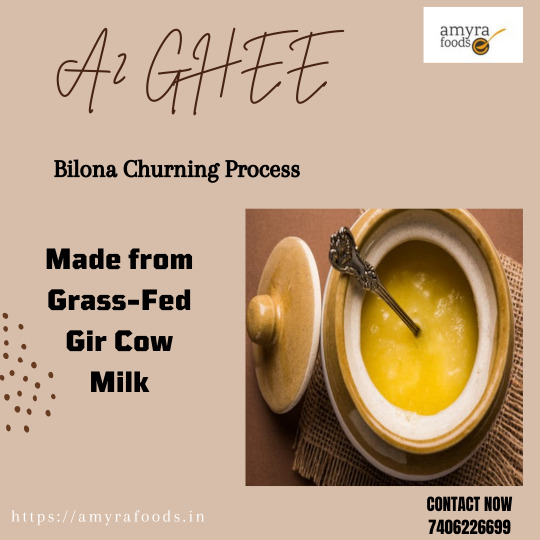
https://amyrafoods.in/products/amyra-a2-cow-ghee
Check out here - https://amyrafoods.in/products/amyra-a2-cow-ghee
#amyrafoods#amyrafoodsa2ghee#bilonaa2ghee#bilonagircowa2ghee#amyrafoodsbilona#bilonamethod#besta2ghee#amyrafoodsbesta2ghee#organica2ghee#organicghee#fresha2ghee#a2gheeindia#a2gheebenefits#a2gheeforimmunity#a2gheeforhearthealth#a2gheeonline#a2gheeforgoodskin#gircowa2ghee
0 notes
Text
Amyra A2 Ghee Made From Bilona Method
When it comes to your health, you want only the best. Amyra Foods A2 Ghee made of pure cow milk with the nutrient-preserving ‘Bilona Churning Process’ is superior in quality and nutrition content compared to ordinary ghee.
You can trust us because we use 100% natural ingredients to make A2 Ghee, which means there are no artificial preservatives or additives.
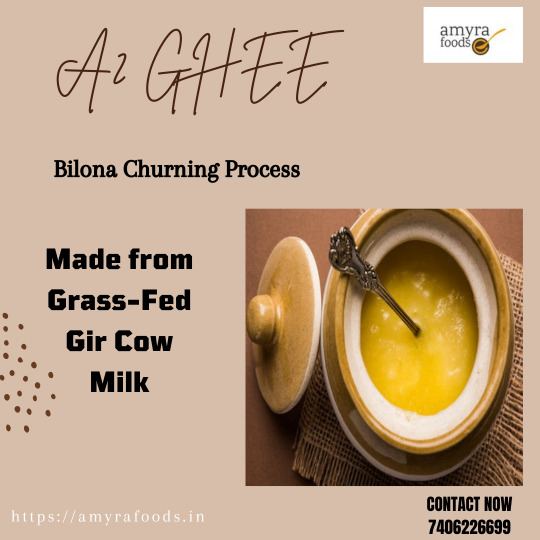
https://amyrafoods.in/products/amyra-a2-cow-ghee
0 notes